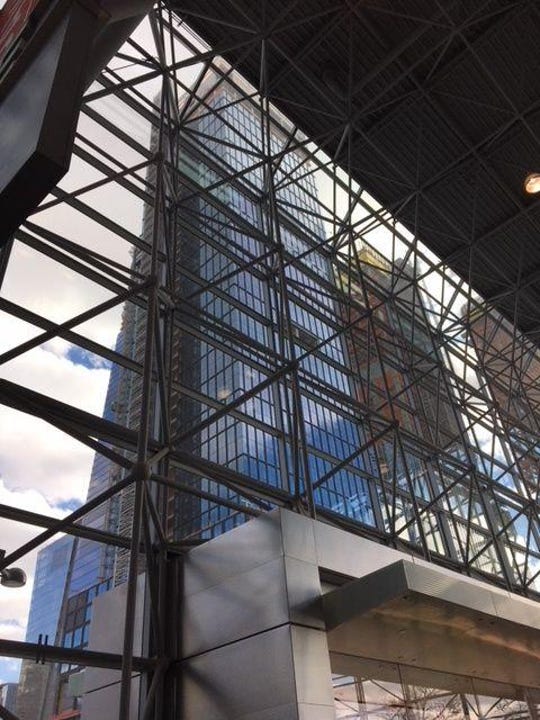Edge of tomorrow: Industrial IoT slowly assembles new modes of production

The Internet of Things (IoT) has plenty of glitzy, fun potential applications, from connected cars to products that refresh themselves through software updates. But the real action in IoT is happening behind the scenes, supporting hardcore manufacturing and industrial machines and systems, such as engine sensors, predictive maintenance, and time-series analysis of controllers. Industrial IoT is as industrial-strength as it sounds.

The industrial IoT is a big, complex ship to launch, and things may be moving slower as expected. A recent survey of 600 high-tech executives by Michael Schallehn and Christopher Schorling, both with Bain & Company. The Bain study found that industrial customers were less enthused about the potential of predictive maintenance in 2018 than they were two years earlier. "Conversations with many customers reveal that implementing predictive maintenance solutions has been more difficult than anticipated, and it has proven more challenging to extract valuable insights from the data, Schallehn and Schorling state. The problem has been integrating such capabilities into existing operational technology, with all its different makes, brands, standards and protocols.
Still, some industry insiders say Industrial IoT is a proving ground that ultimately is reshaping the backbone of the producer economy. Bernd Gross, CTO of Software AG and founder of Cumulocity, for one, says if anything, Industrial IoT adoption has been accelerating. In a conversation at the recent IoT World event in Santa Clara, California, Gross says artificial intelligence and machine learning are changing the game for manufacturers and beyond, especially with artificial intelligence and machine learning being injected into the equation. There are implications for enterprise software systems as well.
The growth of Industrial IoT appear to be slower than predictions because the technology is still in its infancy, he continues. "We're just at the beginning. Most projects are proof of concepts, pilots, and not commercial deployments. People are talking a lot about predictive analytics, but in reality the commercial deployments are just starting to happen now." For example, Gross illustrates, sensors now link to AI-based systems that monitor paint-brush strokes within automotive assembly plants. While a human operator may be able to spot 95% of errors in the application of paint to car bodies, it may take time before the problem is identified and corrected. An AI-driven IoT system can even predict impending problems, he says.
One of the challenges is scaling IoT beyond these proofs of concept. "Scaling Is very difficult, because it's always very specific to a machine or to a process, and even for the very same machine," says Gross. "Predictive maintenance in one factory could look different from any other factory." A number of layers have built up within manufacturing environments, forming what Gross calls a "traditional manufacturing pyramid" -- with the I/O systems, sensors, programmable logic controllers, SCADA, MES, manufacturing execution systems, and ERP on top."
This is an environment ripe for consolidation, with the advent of cloud and edge computing reducing the complexity of the manufacturing pyramid. In particular, the "ERP on top" is where Gross sees disruptive change on the horizon. Look to how the customer relationship management (CRM) space has changed over the past decade as a sign, he says. "Ten years ago, CRM used to be part of ERP -- something most people forget. Now, cloud-based CRM is growing much faster than ERP. That was the first time a cloud environment was eating up capabilities of ERP. Cloud applications are much more innovative, more user friendly, and much more integrated than ERP. You have massive innovations coming from cloud application vendors, and they're eating up IT and ERP."
This is only improving business responsiveness and adaptability, Gross continues. "Cloud is simply easier, more intuitive and faster to use for employees, users, or partners. For example, integrating a cloud application into an ERP or enterprise application can be today done with a user interface only. Five years ago, very large integration projects were required. Easily a million bucks on investment before you got any integration happening."
However, Gross does not advise putting all systems and data into the cloud. Rather, he sees potential with edge computing, in which processing is distributed across the spectrum, from the center to devices themselves. Edge is becoming very, very important, because a lot of use cases cannot rely only on cloud, especially the industrial area.
Edge computing is key as it operates autonomously. "If the connection is not there, the system still has to work, .because for real-time analytics, you cannot just rely on an internet connection," Gross explains. Then, there is the data aggregation requirement. "When there's so much data coming in, it doesn't make sense to push all of that into the cloud," he says. "You want to aggregate data, but not every data point."
Finally, edge computing makes sense as it helps overcome latency issues associated with cloud. Many applications, especially in industrial settings, require millisecond response time, something that cannot be guaranteed with the cloud, he says.
(Disclosure: I was a guest of Software AG at IoT World, mentioned in this post.)